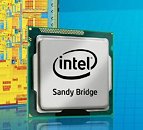Microchip Brings Hardware Quantum Resistance to Embedded Controllers
Driven by advancements in cryptographic research and the need for stronger security measures, the National Security Agency (NSA) introduced the Commercial National Security Algorithm Suite 2.0 (CNSA 2.0) to establish a set of quantum-resistant cryptographic standards. The NSA is now urging data center and computing markets to become post-quantum ready within the next two years. To help system architects meet evolving security demands, Microchip Technology has developed its MEC175xB embedded controllers with embedded immutable post-quantum cryptography support.
As a standalone controller, the MEC175xB family employs a modular approach for developers to efficiently adopt post-quantum cryptography, helping ensure long-term data protection without compromising existing functionality. These low-power controllers are designed with National Institute of Standards and Technology (NIST) approved post-quantum cryptographic algorithms, configurable secure boot solutions and an advanced Enhanced Serial Peripheral Interface (eSPI).
As a standalone controller, the MEC175xB family employs a modular approach for developers to efficiently adopt post-quantum cryptography, helping ensure long-term data protection without compromising existing functionality. These low-power controllers are designed with National Institute of Standards and Technology (NIST) approved post-quantum cryptographic algorithms, configurable secure boot solutions and an advanced Enhanced Serial Peripheral Interface (eSPI).













